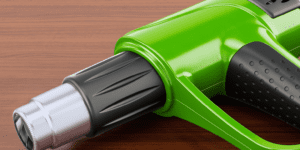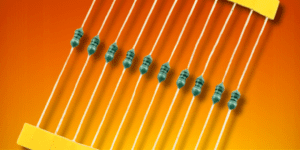Spis treści:
3D printing eagerly uses consumables that have been used in other industries for years. Of course, plastics used for 3D printing are sometimes modified to make them better suited as filaments. Of the many materials available on the market today, two are always the most popular: ABS filaments and PLA filaments. In today’s article, we will look at the first one, which could prove useful not only in professional applications but also for home use.
Properties and applications of ABS Plastics
ABS stands for the chemical name of a common thermoplastic polymer: acrylonitrile-butadiene-styrene. Thanks to styrene, products made of this material have an impermeable surface, while butadiene makes them more resistant to low temperatures (from -20*C). The industry takes advantage of the fact that ABS is very easy to shape so that it can be used in injection moulding machines. Therefore, this material is used for the production of toys (e.g., the popular Lego bricks), casings of everyday objects and elements of musical instruments, sports accessories or furniture, but also pipes installed in sewerage systems. Parts made of ABS have limited flexibility, which makes them much more resistant to cracks under bending stress than other types of common plastics.

ABS filament and printing temperature
Acrylonitrile-butadiene-styrene proved to be the ideal material for 3D printing. Due to its low melting point, it can be used in many printers available on the market. What’s interesting, its melting temperature is not strictly defined, as the ABS filaments have an amorphous structure – it’s within the range of 220 to 260*C. The 3D printer must be equipped with a heated bed, as the ABS filament has a tendency to “flake off” from the substrate. This problem can be solved by an appropriately heated working area and by using ABS juice and other adhesives.
When it comes to temperature issues, we must remind you that the ABS filament tends to shrink during cooling, which in extreme situations can lead to deformation or even cracking of the resulting model in extreme situations (of course, it depends on the dimensions of the printout). And this problem can easily be overcome by equipping the 3D printer with a special cover that guarantees that the temperature is maintained throughout the production process. Such a casing has another advantage: it reduces the penetration of fumes into the environment, which in the case of ABS filaments have a rather pungent smell and are harmful to the human body. For this reason, when printing models with acrylonitrile-butadiene-styrene, you should always take care of good ventilation of the room, preferably – by direct extraction and filtration of the vapours.
Other important properties of ABS filaments
The great advantage of ABS filaments is their durability and impact resistance – in this respect they clearly surpass the popular PLA. Furthermore, models made of this material can be further processed, e.g., by drilling or grinding – without the risk of the material melting or crumbling (unless a high rotational speed tool, e.g., a drill or grinding wheel, is used). A certain inconvenience of 3D printing with ABS filaments is a slightly dull surface, but it can be easily smoothed and made shiny if pure acetone vapours are used. Under no circumstances should you apply liquid acetone directly to the surface of the ABS model, as too strong a reaction would damage the outer layer of the plastic.
See above a bracelet made of ABS filament – flexible yet durable.
ABS filaments available on the market
ABS filaments in their “natural” form are cream coloured. However, individual manufacturers introduce a very wide range of coloured ABS filaments to their product range – therefore it is possible to purchase ABS filaments in such colours as black, primary colours (red, green, blue, yellow), but also in orange, blue or grey. The Devil Design brand has even gone one step further and offers transparent ABS -T filaments – clear and coloured. In addition to the noticeable colour change, the modified ABS plastic has a lower thermal expansion – so it is less prone to deformation when the print cools down. ABS filaments are typically offered in 1.75 mm fiber spools (which is a standard value for most 3D printing devices). The spool weight is usually 750 g, 1 kg or 2 kg.
Are you interested in 3D printing?
Take a look at Botland’s YouTube channel, especially the video series on filaments and 3D design courses!
Summary
ABS filaments will be useful wherever the finished model is to be further processed, e.g. sanded or drilled. The high durability of acrylonitrile-butadiene-styrene material led to its widespread use in the manufacture of housings, toys, furniture or medical equipment long before the development of 3D printers. With the ABS filaments currently available on the market, you can create lightweight and durable models. The range of consumables for 3D printing also includes modified ABS versions with reduced shrinkage.
How useful was this post?
Click on a star to rate it!
Average rating 0 / 5. Vote count: 0
No votes so far! Be the first to rate this post.










